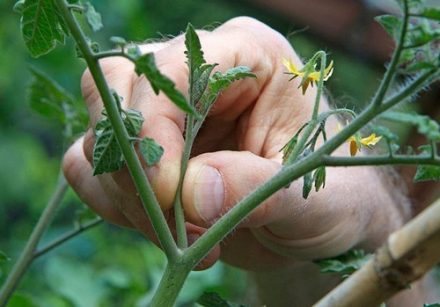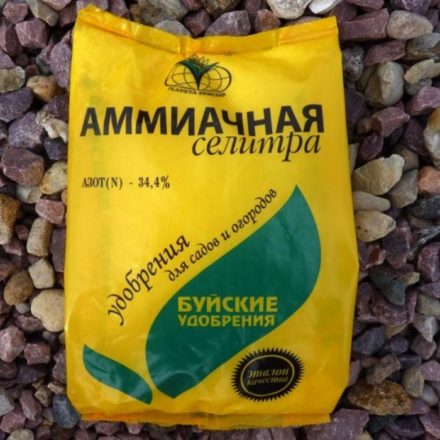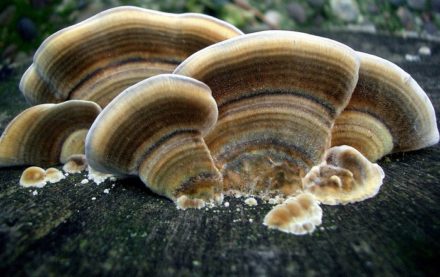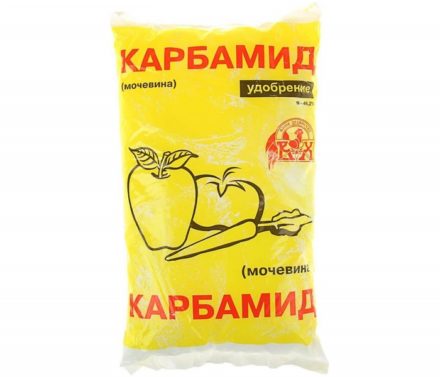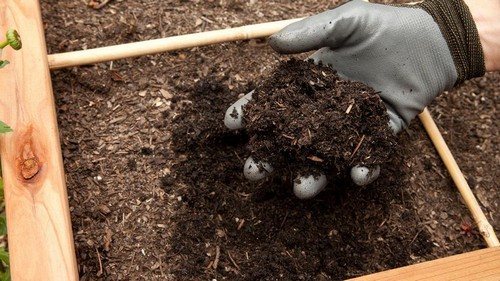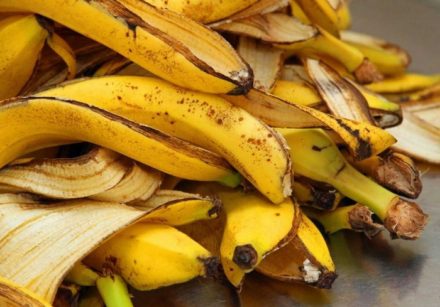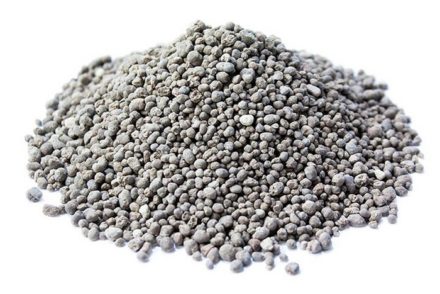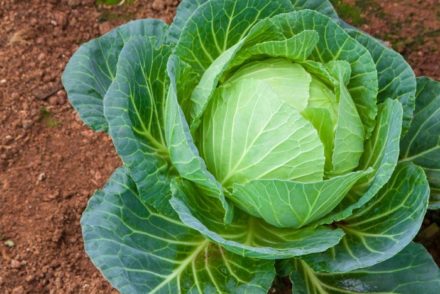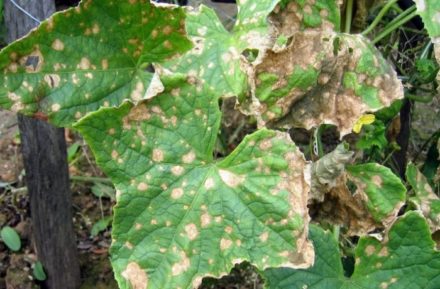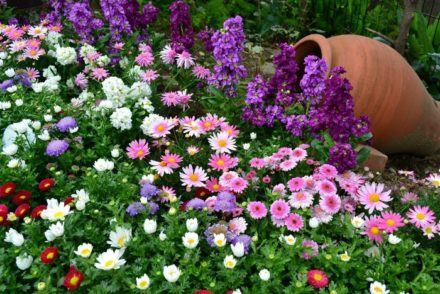Seaweeds, removed stepsons, mowed grass - many simply throw this “garbage” away. But it turns out that waste after weeding and removed parts of garden crops are used beneficially for a summer cottage. There are many options.
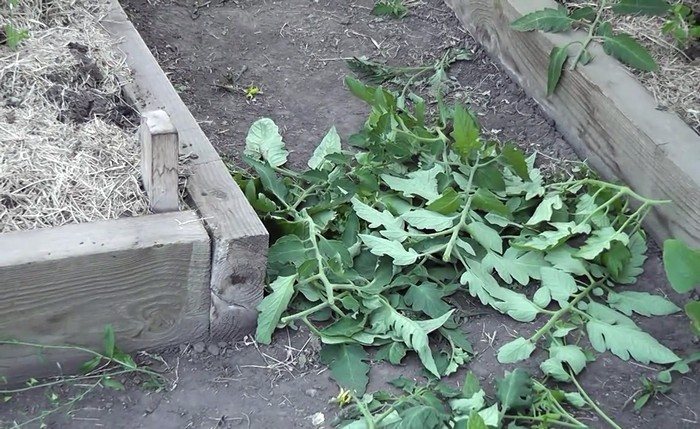
How to use tomato shoots
Tomato tops contain many vitamins, minerals and essential oils. It is not advisable to throw away stepsons, since useful infusions, decoctions and other remedies are prepared from them that are useful in the garden.
Simple agricultural techniques (composting, infusion) help obtain new compounds that will enrich the soil and help prevent damage by pests and diseases.
For such purposes, only healthy tops that show no signs of disease are used. Leaves and stems should be green. Withered parts of plants are destroyed.
The leaves and stems of tomatoes are dried and then used to prepare infusions.
There are several options for using “garbage” after pinching.
- Green manure. The leaves and tops are infused for 8–10 days. Place 2/3 of the green mass into the container and then fill it with water. Various plants are watered with this fertilizer.
- Ash. Tomato tops are dried and then burned. Ash is mixed into the soil, diluted with water and watered over the plants.
- Pest repellent. The leaves of all crops of the Solanaceae family contain a toxic element - the glycoside solanine.If you prepare a decoction or infusion from tomato leaves, you get an excellent product for spraying other crops. With the help of such a drug, which will have a pronounced insecticidal effect, you can cope with aphids, bedbugs, caterpillars, the Colorado potato beetle, and spider mites.
If you don’t have time to prepare decoctions and infusions, simply lay out the tops between the rows. It will repel pests and also act as mulch, which will prevent water evaporation and fill the soil with nutrients.
Garlic arrows
One of the important features of garlic arrows is the ability to protect other plants from late blight. A specially prepared solution can be used to process tomatoes.
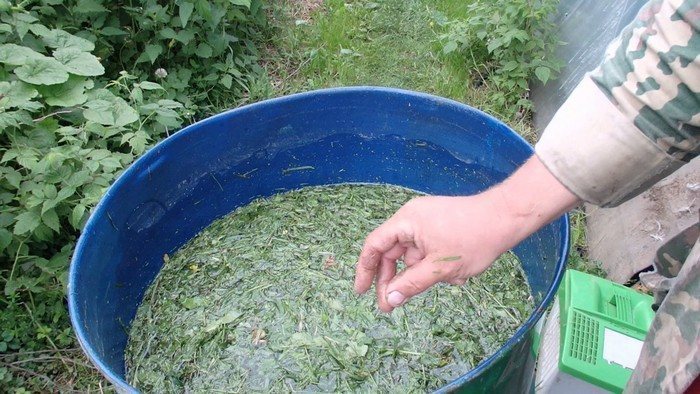
Fresh garlic arrows are cut into strips and they fill 1/5 of the container. Top the greens with water at room temperature. Cover the container with a lid and leave for 24 hours. Plants are treated with a spray bottle at intervals of 10–14 days.
Apple drop
With a good harvest, fallen apples usually have nowhere to go. You can simply throw them away, or you can use them for the site. Carrion and waste from its processing are excellent fertilizers. You can use them immediately, or you can compost them for next season.
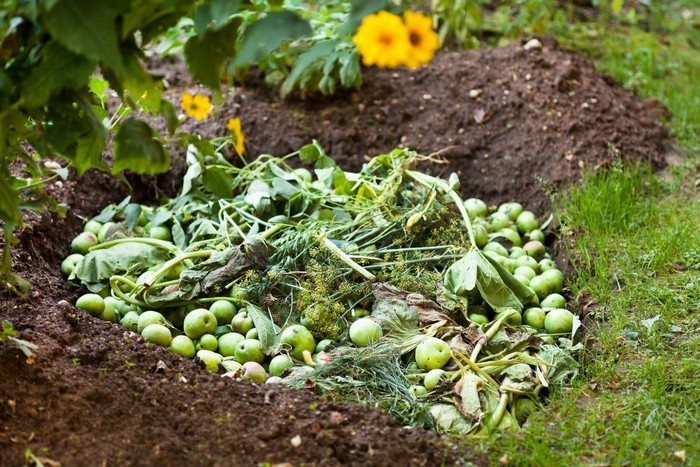
They respond especially well to fertilizer made from fallen apples:
- raspberries,
- gooseberry,
- viburnum,
- hawthorn,
- Rowan,
- magnolia,
- quince,
- fruit trees,
- rhododendron.
When fertilizing plums and cherries with carrion, it is necessary to fill it with a large volume of wood ash, since these plants do not like acidic soil.
With the help of fallen apples, you can quickly return phosphorus, iron, potassium, molybdenum, copper and iron lost to the soil. Make a small ditch (approximately 10–15 cm deep) in the soil near the plants, pour a layer of carrion, sprinkle ash on top and mulch with fallen leaves, sawdust, chopped tops and fallen foliage.
If you use garden waste wisely and wisely in the summer (weeds after weeding, mown grass, tomato shoots), then they will turn from garbage into nutritious fertilizers. They are subsequently used until the end of the season.


